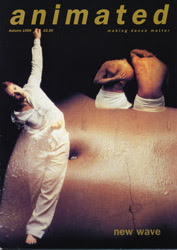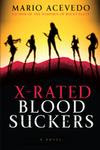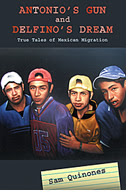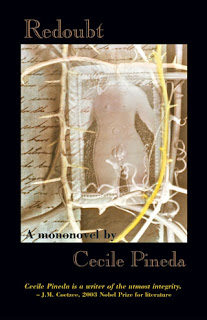Enter to win, because I love it when people win!
Burgers, Beasts, and Brainwashed Bullies by Aaron Starmer Delacorte 2009 Denton, Wendell, Eddie, Elijah, and Bijay have been framed for a theft they never committed by Vice Principal Snodgrass. Rather than turn them over to the police with mountains of manufactured evidence the boys agree to follow Snodgrass into the basement of Ho-Ho-Kus Junior High where they are to study for the Idaho Exams.

The Truth about Horses, Friends, & My Life as a Coward by Sarah P. Gibson, illustrations by Glin Dibley, Marshall Cavendish, 2008 -- publisher supplied review copy
This is the kind of book I want to link arms with and go walk around the mall with while we text people we know.
Sophie's family owns three horses. Sophie does not like horses. Sophie fears horses (with good reason) yet cannot escape them.
They do not know much about horses when they begin, inadvertently, to collect them. Her mother and sister are horse romantics but Sophie has learned the hard way that horses are dangerous. A loner, she is reluctant to use the horses as "friend bait." In fact, she uses them as a wedge against the disappointment that woud-be friends are only interested in her because of her horses. Sophie is wary of people and the horses.
Horse lovers should appreciate this realistic look at what it is like to have horses in your life. This is not King of the Wind. There is no "Marguerite Henry" glow to these equines. These horses have matted manes and hang out near manure piles. Really is a (really) mean pony who bites everyone, Sweetheart is a swayback Arabian who craftily sheds her riders against tree branches and Fancy Free is a horse-and-a-half in size but missing some major horse sense. Each horse has a lesson to teach Sophie though.
As a mother and a teacher, I've seen it. Second semester, fourth grade, the hormones kick in and the social re-ordering begins. Friendships are broken and new alliances are formed when small groups at recess morph into cliques that are open to some while others are excluded. Just finding a group to sit with at lunch time is an emotionally charged experience in junior high. Sophie has lived this which is why her comment, "I never had a best friend until Melissa Maloney moved in up the street " hits with poignancy and hope. Readers from grades 4-8 will identify.
While all that sounds very serious, the Gibson's humor is very sly, very clever, very witty and causes so many audible chuckles, snorts and guffaws that family members will look at you expectantly as you read, hoping you will share. The story unfolds in a series of vignettes with titles like, "How Not to Buy a Pony or Danger in a Small Package."
I love this book.
I think it is time to cruise by the pretzel place now and then we'll go check out the earrings at The Icing and Claire's.
I hope everyone's holidays are going/went well. I hope that Hanukkah Harry, Solstice Sam, Santa, and Kwanzaa Kofi were good to you and yours and that now you're all full of cookies and goodness and curled up with the parts of your family that don't drive you crazy and a good book.
I had to leave Wisconsin much too soon, but it was a lovely time even if the Packers totally sucked in Sunday's game. (ouch. seriously. ouch.) It even snowed...
Also, I got a lot of reading done. I now have 21 books to read before Monday turns to Tuesday. I can totally pull that off, right? Yeah, I know. But, it will be fun to see how far I get.
Anyway, here are a few of the books I read in various airport lounges, airplanes, and my parents' living room.

Christy Adair is a freelance writer and cultural critic, contributing to such dance journals as Spare Rib and Everywoman. Women and Dance: sylphs and sirens (Macmillan, 1992), is a text used on dance and performance courses in Britain, America and Asia. Adair contributes reviews and articles to journals, magazines, radio and television both nationally and internationally. She also facilitates a range of performance and education events. Adair is a Reader in Dance Studies at York St John University and is committed to radical performance which communicates an exhilaration of moving and challenges social contexts. Christy has significant links with the dance performance industry both locally in the UK and internationally. Her current research interests focus on gender and ethnicity in relation to dance studies and performance. Her forthcoming book is entitled Dancing the Black Question: The Phoenix Dance Company Phenomenon.
In Women and Dance, Adair introduces the reader to an analysis of Western dance from the point of view of gender and post-feminist analysis. Despite the traditionally high profile of women as principal dancers, Adair asserts that modern Western dance is far from a woman-centered medium. Due to the lack of women choreographers and directors, the genre’s vision of women continues to be rooted in patriarchal notions of the female. It is a representation of the female body that is seriously limited, still unable to reflect the depth of women’s reality.
Adair sees the most synchronous images of women having their origins in dance/performance companies that evolved as in the period post 1970. According to Adair, these groups reflected the fluid, politically progressive images of women following the last wave of the feminist movement. Their major contribution was the development of a type of performance that pushed the boundaries of gender and sex-role expectations. In a piece entitled She Is Giving Birth to Herself, Adair describes how the group Bush Mama explores the primacy of woman relating to other women, not woman-as-male-love-object.
The most useful portion of the book was: “The subversives...women’s dance practices.” It underscores Adair's central tenet that images of women will only be expanded with women themselves taking control of developing, directing, and mounting their own work. This, according to Adair, must occur despite the social and economic barriers involved.
This is particularly potent for me as I try to work more on dance and spoken word pieces. I came to the same realization over the last ten years that I needed to do whatever was necessary to control my own work, how it was showcased, etc. It's also an opinion I've shared with other writer/performers, such as Tara Betts and Sharmili Majmudar, as well as initial discussions with dramaturg and performer Coya Paz, founding member of Teatro Luna here in Chicago.
My only two hesitations in recommending Women and Dance are these: it's an extremely dense read, which made for laborious, although worthwhile reading, and that the book is expensive and better gotten through library sources. But simply put, Women and Dance a vital sourcebook for women performers across the board.
Sam Quinones's new book ANTONIO'S GUN AND DELFINO'S DREAM,Lisa Alvarado
a book of vignettes on immigration that has been lauded in the San Francisco
Chronicle, Los Angeles Times, Publishers Weekly, and Library Journal,
as well as having been featured by La Bloga's Daniel Olivas.
Quinones has spoken about immigration--indeed a hot topic again as
Homeland Security begins cracking down on companies that hire
"illegals"--on NewsHour, NPR, and CSPAN.
The newest feature of Sam's website, www.samquinones.com is a link
where the public can tell their "True Tale," the name of which taken
from Sam's first book, TRUE TALES FROM ANOTHER MEXICO.
Here's the link, which has five or six stories from people on it.
http://www.samquinones.com/other_stories.asp
pensamientos on 4 books - by RudyG (Denver)
It would be a stretch for me to link this post to Father's Day, so I won't try. . . I've been gone so long from this site. . . I thought of sharing memories of my past year with 22 bilingual second graders, but alas, there were no tearful moments to end such a piece with. . . I considered ranting about the strain of reaching and teaching U.S. children when the educational bureaucracy binds one arm about your body, but thankfully, I'm bored with my rants.
Anyway, since my compa's on La Bloga have done a better-than-scholarly job since my going on sabbatical, I accept that anything I post is destined to pale. . .
Though I've written little in past months, I have read, some great and some so-so. Since I suck as a reviewer, better I just share mis pensamientos about four books, which I highly recommend, for differing reasons:
First: Dan Olivas recently gave us a great interview with Mario Acevedo, author of X-Rated Bloodsuckers (from Rayo press). I enjoyed his first, Nymphos of Rocky Flats, even though the vampire genre is not high on my list of must-reads. Maybe I read both because like some of you I'm aburrido con movies, TV programs and books where even the bad guys are usually Anglo. Mario's storytelling talents made his novel well worth the digression. Now, to my minor, peculiar thoughts about this book: the format Mario--more likely his publishers--used to handle Mexican vocabulary. Here's two examples:
Now, to my minor, peculiar thoughts about this book: the format Mario--more likely his publishers--used to handle Mexican vocabulary. Here's two examples:
1. "He snipped the pouch open and squeezed blood over his chile relleno combination plate. "Smothered. The only way to eat Mexican food. Come tomorrow this chile and beans are going to turn my ass into a weapon of mass destruction." [Nymphos, p. 214]
2. " 'Tripas for menudo. Sesos. Lengua. You name it.' . . . It wasn't tripe, brains or tongue that I wanted." [Nymphos, p. 35]
As an accommodation to the non-Spanish readers, this style feels non-intrusive. An English reader should get that the relleno plate was chile and beans, and easily understand the second passage. In the back of my bilingual brain I notice this accommodation, but glide over it. Now look at the format adopted in Mario's latest book:
"Que bonito chante," Coyote said. What nice digs. . . "Pa'que?" What for?" [X-Rated, p.78]
Not every Spanish word is handled this way. Nada is not translated, assumedly because of wide usage. And other formats are sometimes used, like dashes around the translation instead of a literal repetition in English. But the vast majority of Spanish terms are tediously, almost inexorably follow the above format.
The style used in Nymphos required more skill by the author, and at times more effort by the reader, both desirable in a literate society. But flexibility in Mario's first work, gave way to regimentation in his second. It reminds me somewhat of a condescending approach toward Anglos. "Let's repeat it to the poor English reader, right afterwards, very obviously, so he doesn't have to use his brain to grapple with a foreign tongue," I can hear the editors thinking.
Clearly, I'm putting words in people's mouths. This may in fact be Mario's new approach to dealing with monolingual readers. Since I'm not one of them, I can't complain as such. I'm simply ranting as a bilingual that this format draws more attention to itself in its didactics than his previous style, making me very aware of its usage and taking me out of the story, not a desirable literary feature.
Notwithstanding its peccadillo, do check out X-Rated Bloodsuckers. Then you will also learn what tapetum lucidum means. Second: Fellow Bloguista Dan Olivas also previously highlighted Antonio's Gun and Delfino's Dream, from UNM Press, the second collection of border/migration chronicles by Sam Quinones.
Second: Fellow Bloguista Dan Olivas also previously highlighted Antonio's Gun and Delfino's Dream, from UNM Press, the second collection of border/migration chronicles by Sam Quinones.
If you enjoy investigative reporting--hard facts and wonderful trivia--this book is a must. It's historical in that it details anomalies like the rise and demise of Elvis-velvet paintings, and it is insightful in the wealth of personal narrative Quinones collected over many years of communicating with Mexican immigrants.
In our ignorant era of anti-immigrant hate-propaganda, billions-for-border-patrols and the attempted elimination of U.S. bilingualism, I have an added reason you should check this very readable book: because you work with mexicanos. I recommend this book (plus his True Tales From Another Mexico) to those of you--Chicano or otherwise--who need to know more about the mexicanitos you teach, the immigrant families you service or the expatriated machos you sell to.
Face it: Americans, including Chicanos, don't really have much prior knowledge about the mexicano. We have stereotyped ideas about why they came, what their aspirations are, what they hope their children's futures will be.
For instance, my previous assumption was that many mexicanos who send money back to Mexico will return or retire there. I even had a student this year who repeatedly retorted to my criticizing her poor attendance with, "My dad says we're going back to Mexico one day, anyway."
It's only from Quinones' book that I learned how and why this aspiration has instead resulted in Mexican ghost towns filled with custom-built homes financed by immigrant dollars, homes that are occupied maybe twice a year by expatriates whose ties to the motherland weaken with each year they spend in the U.S. Many become permanent residents of their adopted country.
This knowledge led to my adjusting discussions with immigrant parents about their kids' schoolwork. One parent was surprised I knew so much about Zacateca migration, about his upgrading his home there, about my prediction that he might never return with his family--all things garnered from an informative read of Antonio's Gun and Delfino's Dream.
Visit Quinones's website for more information. Third: I've been accused of being a homophobe, but I like to think it's just cultural vestiges of my muy macho-ness. I do admit queer lit is even lower on my list than vampire novels. This means that added to my weaknesses as a book reviewer, I've little knowledge of novels written by or featuring lesbians. So, when I picked up Like Son (Akashic Books), by Felicia Luna Lemus, I wouldn't have been surprised to not like it, or not finish it, something I rarely do.
Third: I've been accused of being a homophobe, but I like to think it's just cultural vestiges of my muy macho-ness. I do admit queer lit is even lower on my list than vampire novels. This means that added to my weaknesses as a book reviewer, I've little knowledge of novels written by or featuring lesbians. So, when I picked up Like Son (Akashic Books), by Felicia Luna Lemus, I wouldn't have been surprised to not like it, or not finish it, something I rarely do.
But this is one of the most captivating, literary novels I've read in years.
Set against a thematic backdrop of historical figure Nahui Olin (the mesmerizing cover photo), Like Son feels like a novel only a Chicano, una mujer escandalosa as Lemus calls herself, could write. That it is considered a jewel in the transgender circuit unfortunately may mean many in the Chicano-reader world will never enjoy the experience of Lemus's great writing.
Yes, even a homophobe will find considerable merit in the well-developed, complicated plotting in this coming-of-age story that engaged this hetero from beginning to end. And you won't even have to set aside your abhorrence of lesbo scenes. This is one fine work.
The novel and author have been greatly praised by the literary world and there's no point in my attempting to outdo them. Check her website or the publisher's for yourself.
Fourth: Wings Press, publishers of Cecile Pineda's Redoubt, describe her book like this: "Imagine Woody Allen, Lewis Carroll and John Barth with a feminist surrealist twist." From my read, I'd suggest something more like: "Imagine Paul Auster, Samuel Beckett and a flashback of your best mescaline trip, through a totally female introspection."
This book is heavy on the experimental, as it's called. Plus, if you can't spell existentialism, if you easily tire of free-flowing prose, however well presented, and if you'd rather be story-led in the manner of Acevedo's publishers, stay away from this one.
But if you're a writer or a serious reader, looking for prose that t akes you to the type of places where few have successfully kept your attention before, pick this one up. As the publishers further describe it, Redoubt is "Told in the voice of a lone holdout standing guard on an unnamed frontier. Redoubt addresses questions of conception and birth, gender, war and the slouch toward Apocalypse. Structured like a jazz riff, it takes as its thematic underpinnings the dictionary definitions introducing each section."
akes you to the type of places where few have successfully kept your attention before, pick this one up. As the publishers further describe it, Redoubt is "Told in the voice of a lone holdout standing guard on an unnamed frontier. Redoubt addresses questions of conception and birth, gender, war and the slouch toward Apocalypse. Structured like a jazz riff, it takes as its thematic underpinnings the dictionary definitions introducing each section."
If I'd read that, I doubt I'd ever have opened its pages. Again, to differ with the publishers, here's my version: "Told through the mind of one unfathomable woman permanently relegated to warn of imminent invasion by the Enemy, Redoubt will carry you into an emotional maelstrom where Apocalypse would seem like liberation, in contrast to the heroine's timeless solitude. Enmeshed in an existence more Huit Clos than Sisyphus's most dreaded nightmare, it will carry your unwilling Self into niches of life never described in any dictionary."
Redoubt is a road many readers--forget about just Chicanos--wouldn't want to take. Of course, many of us have no idea what the labors of childbirth or the daily grind of repressed-but-one-day-liberated females might be like, either. We males would not be lesser males for learning about that. Redoubt takes you there; it is as close as I've ever come to "being one" with a woman, through the pages of a book.
You can find out more about Cecile Pineda and her other works at http://home.earthlink.net/~cecilep/index.htm.
That's enough for a return post. If you're one of our readers who has no life and nothing better to do on Father's Day, I'd be interested in comments about my approach to these works. Of course if you have a life, please go enjoy that, instead.
I’ve already read this (and loved it) but I’m always up for a paper copy of a good book.
Thanks, Maya–that’s so nice!